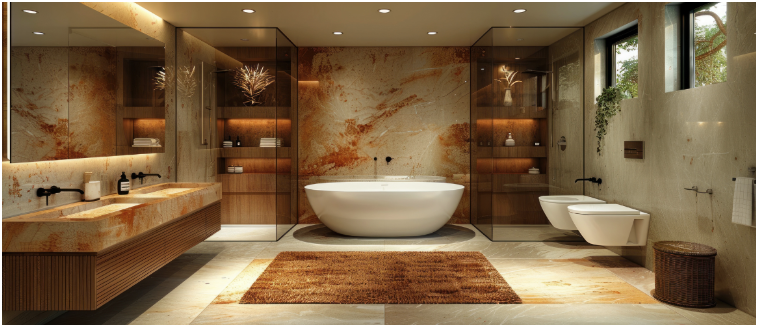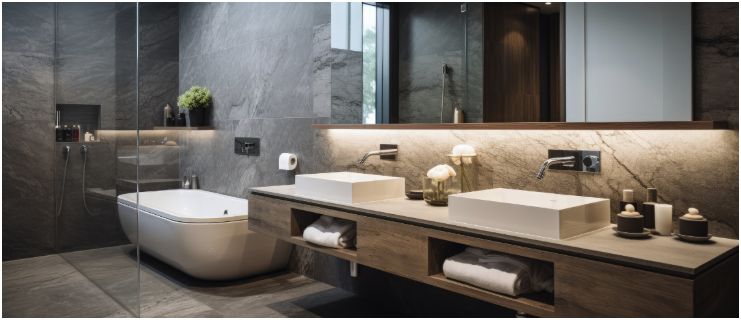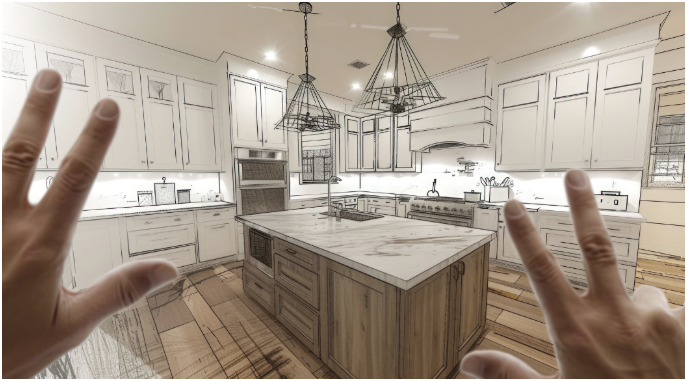
The allure of a beautifully remodeled kitchen or a serene, spa-like bathroom is undeniable. Yet, for many homeowners, the dream often collides with the daunting reality of costs. The perception that a significant overhaul requires an equally significant bank account can deter even the most enthusiastic renovators. But what if I told you that achieving a stunning transformation doesn't always necessitate breaking the bank?
Remodeling on a budget isn't about compromising on quality or settling for less than you desire. Instead, it's about smart planning, strategic choices, and knowing where to save without sacrificing impact. This comprehensive guide will equip you with the knowledge and actionable tips to navigate your kitchen or bathroom remodel financially, proving that your dream space is well within reach, even on a tighter budget.
The Foundation: A Realistic Budget is Your Best Friend
Before you even think about tearing down a wall, the most crucial step is to establish a rock-solid, realistic budget. This isn't just a number; it's your financial roadmap.
Know Your Limits: Determine how much you can truly afford to spend. This might involve looking at savings, potential loans, or even a second mortgage. Be honest with yourself.
Research Average Costs (Locally): Get a sense of what similar remodels cost in your specific area. Prices can vary dramatically by region. Online tools, local contractor estimates, and even a quick chat with a real estate agent can provide valuable insights.
Allocate Wisely: Create a detailed spreadsheet for every single component: demolition, plumbing, electrical, flooring, cabinets, countertops, fixtures, appliances, paint, and, most importantly, a contingency fund.
The Contingency Fund (Non-Negotiable!): This is perhaps the most critical budget item often overlooked. For older homes, or any remodel for that matter, set aside 10-20% of your total budget for unexpected issues (e.g., discovering mold, outdated wiring, rotten subflooring). Without this, a "surprise" can quickly derail your entire project and finances.
Phase 1: Smart Planning & Design Choices – Saving Before You Start
The biggest savings often come before any hammer swings. Strategic planning can reduce costs significantly.
Don't Change the Layout (Unless Absolutely Necessary): This is the golden rule of budget remodeling. Moving plumbing lines, gas lines, or electrical outlets is incredibly expensive. If you can work with the existing footprint of your kitchen or bathroom, you'll save thousands in labor and material costs.
Kitchen: Keep your sink, stove, and refrigerator in their current locations.
Bathroom: Maintain the placement of your toilet, shower, and vanity.
Prioritize What Matters Most: What are the non-negotiables for your remodel? Is it a spacious island, high-end appliances, or a luxurious shower? Identify your top 2-3 priorities and allocate more of your budget there, while being willing to compromise on less critical items.
Opt for "Cosmetic" vs. "Structural":
Cosmetic: Think new paint, refacing cabinets, replacing hardware, updating light fixtures, or a new backsplash. These are powerful transformations with a lower price tag.
Structural: This involves moving walls, changing floor plans, or extensive plumbing/electrical rerouting. These are costly and should only be undertaken if absolutely necessary.
Open Shelving (Strategically): While not for everyone (dust!), open shelving can be significantly cheaper than upper cabinets, especially if you have beautiful dishes or decorative items to display. Use it sparingly for maximum impact and minimal clutter.
Phase 2: Savvy Material & Fixture Selection – Where Every Dollar Counts
This is where your research and willingness to explore alternatives truly pay off.
Cabinets: Reface, Paint, or Smart Stock Choices:
Refacing: If your cabinet boxes are structurally sound, refacing them with new doors and drawer fronts (and updating hardware) can give you a brand-new look for a fraction of the cost of new cabinets.
Painting: A fresh coat of paint can miraculously transform outdated cabinets. Proper prep is key for a durable finish. This is a highly impactful, low-cost option.
Stock or Semi-Custom: Instead of fully custom cabinets, explore high-quality stock cabinets from big-box stores or semi-custom options. Many manufacturers offer excellent designs and finishes at more accessible price points. Look for ready-to-assemble (RTA) cabinets for further savings if you're handy.
Mix and Match: Use higher-end finishes on a few key upper cabinets or an island, and more budget-friendly options for the rest.
Countertops: Beyond Granite and Quartz:
Laminate: Modern laminates are light-years ahead of their predecessors. They come in a vast array of colors and patterns, mimicking high-end materials at a fraction of the cost, and are surprisingly durable.
Butcher Block: Offers a warm, natural look, is relatively inexpensive, and can be stained or sealed to match your aesthetic. Requires regular maintenance.
Tile: Ceramic or porcelain tile countertops are budget-friendly and durable, though grout lines require more maintenance.
Pre-Fabricated Slabs: If you love granite or quartz, ask about pre-fabricated slabs. These are often less expensive than custom-cut slabs, especially for smaller bathrooms.
Flooring: Durable and Cost-Effective Options:
Luxury Vinyl Plank (LVP) / Luxury Vinyl Tile (LVT): These are incredibly popular for a reason. They mimic hardwood or stone realistically, are waterproof, durable, and significantly cheaper than their natural counterparts. Many are DIY-friendly with click-and-lock systems.
Ceramic or Porcelain Tile: While installation can add to the cost, the tiles themselves can be very affordable, especially if you opt for standard sizes and simpler patterns.
Sheet Vinyl: The most budget-friendly option, offering water resistance and easy cleaning.
Fixtures (Faucets, Sinks, Showerheads):
Shop Smart: Don't automatically head to specialty showrooms. Online retailers, home improvement stores, and even discount plumbing supply stores can offer excellent deals.
Bundle Deals: Sometimes buying a sink and faucet together, or a complete shower system, can lead to savings.
Prioritize Function Over Brand: A well-made, less-known brand can offer the same functionality and durability as a high-end designer brand for less.
Appliances (Kitchen):
Floor Models & Scratch-and-Dent Sales: Always ask about these! You can often find significant discounts on perfectly functional appliances with minor cosmetic flaws.
Holiday Sales: Black Friday, Memorial Day, Labor Day – these are prime times for appliance deals.
Energy Efficiency: While the upfront cost might be slightly higher, energy-efficient appliances will save you money on utility bills in the long run.
Phase 3: Labor & Execution – Where DIY Meets Professional Help
Labor costs are a huge portion of any remodel. Smart choices here can save you a bundle.
Strategic DIY (Do-It-Yourself): Be realistic about your skills and time.
Demolition: If you're physically capable and have the right safety gear, tearing out old cabinets, tile, or fixtures can save on labor costs. Be extremely careful around plumbing and electrical lines.
Painting: A relatively easy and highly impactful DIY job. Invest in quality painter's tape and brushes for crisp lines.
Simple Installs: Consider installing your own light fixtures (if you're comfortable with basic electrical safety), hardware, or even some types of flooring (like LVP).
Project Management: If you're organized and have time, acting as your own project manager (coordinating different trades) can save on a general contractor's fee, but this requires significant effort and knowledge.
Hiring the Right Professionals: Don't skimp on critical trades.
Plumbing & Electrical: Unless you are a licensed professional, always hire certified plumbers and electricians. Errors here are costly, dangerous, and can lead to major code violations.
Get Multiple Bids: Don't just go with the first contractor. Get at least three detailed quotes for comparison. Make sure they specify exactly what's included.
Check References and Insurance: A cheap contractor who isn't insured can cost you dearly if something goes wrong. Always verify licenses, insurance, and check references.
Labor-Only Quotes: If you're supplying all materials, some contractors might offer a labor-only quote, which can be cheaper.
Buy Used or Reclaimed (Carefully):
Salvage Yards/Architectural Salvage: You might find unique vintage fixtures, doors, or even wood beams at a fraction of the cost.
Online Marketplaces (Facebook Marketplace, Craigslist): People often sell gently used cabinets, appliances, or sinks after their own remodels. Inspect items thoroughly before buying.
Habitat for Humanity ReStore: A fantastic resource for affordable, often new or gently used, building materials, appliances, and fixtures.
Phase 4: The Finishing Touches – Small Details, Big Savings
Even the final aesthetic touches can be managed on a budget.
Paint Power: A fresh coat of paint is one of the most transformative and cost-effective updates. Choose a paint color that complements your chosen materials.
Hardware Happiness: New cabinet pulls, drawer handles, and even towel bars can instantly update the look of your kitchen or bathroom for a relatively low cost. Shop online or at discount stores for stylish options.
Accessorize Smartly: Instead of expensive art, use plants, decorative trays, and unique pieces you already own to personalize the space.
Window Treatments: Simple blinds, shades, or even DIY fabric valances can be much more affordable than custom draperies.
Common Budgeting Pitfalls to Avoid:
Underestimating Costs: Always add that contingency fund!
Impulse Buys: Stick to your plan and avoid buying materials or fixtures on a whim.
Changing Your Mind Mid-Project: Design changes during construction are almost always expensive.
DIY Overreach: Don't take on tasks you're not genuinely skilled at. The cost of fixing a DIY mistake by a professional will often negate any initial savings.
Ignoring Permits: Skipping permits can lead to fines, stop-work orders, and difficulties when selling your home. Factor permit costs into your budget.
Call the Bathroom and Kitchen Remodeling Experts at Cabinet Wholesalers for a Free Design Estimate
Remodeling on a budget is not a myth; it's a strategic approach to home improvement. By setting a realistic budget, prioritizing your needs, making smart material choices, and being strategic about DIY versus professional help, you can achieve a stunning kitchen or bathroom transformation without financial stress. It requires diligence, research, and a willingness to explore alternatives, but the reward is a beautiful, functional space that you love – and that you can genuinely afford. Start planning today, and watch your dream space come to life, one smart saving at a time.
Subscribe to Cabinet Wholesalers's Blog











Comments